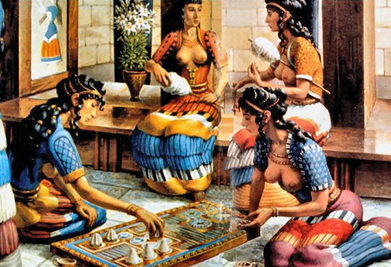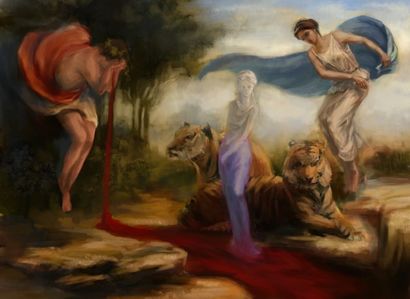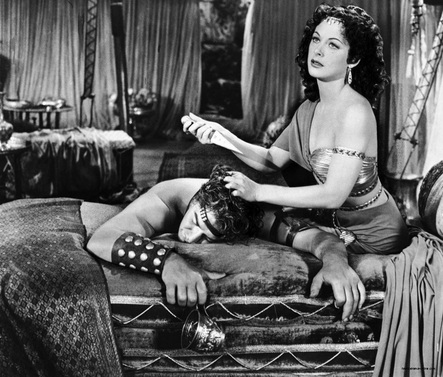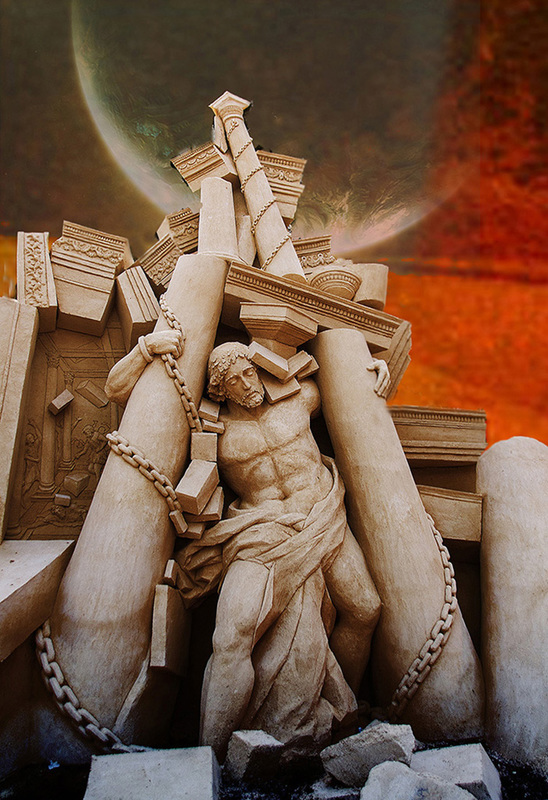|
Similar to mortals, each and every Goddess has a unique personality and powerful traits. All Goddesses have their weaknesses and flaws, but they never allow a silly mistake or error in judgement to bring them down.
A Goddess has no shame in speaking her mind and fighting that which doesn't suit her. Sometimes a victim, a Goddess will stay true to herself and make things work in her favour. But a Goddess also knows that some things cannot be changed. And in those cases, she comes to terms with her circumstance, and claims her power within it. Goddesses love and honour themselves daily, never apologising or making excuses for being who they are, rather utilising their skills and strengths with confidence. Here you can find out which mythological Goddess you embody the most. Are you sensual and compassionate like athena? Mysterious and wild like Artemis? Or a sexy and vengeful queen Goddess like Hera? Click on the link below to take the quiz and find out who your spirit Goddess is. You can then do some research into her story, and learn how to survive and strive with your unique character... turning your qualities into your power. Become the Goddess you were born to be.
2 Comments
 Atargatis, originally the Goddess of fertility, fell in love with a shepherd-boy. Being a mere human mortal, he was killed by her divine lovemaking. Anguished in her mourning, Atargatis was distraught with guilt and heartache. It didn’t take long for the Goddess to realise she was pregnant. She became distraught, almost wishing she had never pursued the mortal in the first place. After all, if it wasn’t for her, he would still have his life. Giving birth all alone by the sea, she named the baby Semiramis, suddenly choosing to leave her on the shore, and throwing herself into a the ocean to drown. The powers that be at the time would not have her die over a simple earthly circumstance, choosing instead to turn her into a fish woman. Atargatis grew a long, fish tail covered in shimmering coral scales. She instantly had the ability to breathe and see under water perfectly, swimming and splashing around while communicating with the other sea creatures. Atargatis was finally home. Later on as the mermaid species grew, myths and stories of their evil ways spread. Mermaids, having beautiful voices whose hymns would echo for miles, would sing to men on ships or shores nearby, practically hypnotizing them with their beauty and song. Those affected would rush out to sea only to be either drowned, eaten, or otherwise sent to their doom But where does this maliciousness come from? Perhaps with time, mermaids began resenting men for fishing in their seas and eating their sea creature friends. But many believe that even mermaids with pure intentions would be great danger to men, who upon seeing a mermaid would believe they were looking at a drowning woman, and would dive into the waters to save her. Other stories suggest that mermaids either forgot, or couldn’t grasp the concept that humans could not breathe underwater. They mermaids would be so excited over seeing a human, thrilled to finally be able to talk and connect and share their world, they would pull the humans down into the depths of the sea, accidentally drowning them in the process. Perhaps that is why mermaids finally decided it was best to keep their world and the human world separate… Choosing to keep themselves hidden until the day when our worlds can come together, once and for all. Shop our Atargatis piece here: /store/p107/Ariel.html artwork by Elena Dudina  Being the sun god loved and worshipped by all, Ra was thought to be eaten by the jealous snake Apep every night, creating the darkness of night sky. The battle would go on all night, and just before dawn, Ra would beat the slimy snake and rise once again. The wise daughter of Ra, Bastet, transformed herself into a cat for the sharp night vision with the hopes of defeating Apep once and for all. Ra's priests tried cursing Apep many times, but Apep was too powerful. Finally, with her cat eyes glowing in the dark, Bastet stalked Apep, eventually lounging and sinking her sharp teeth into the evil serpent, killing him almost instantly. The sun god was proud of his daughter and grateful to her for his life, which ensured the warmth of the sun would go on gifting the the Nile with fertile soil and rich crops. The people honored her as Goddess of fertility. Bast was originally known by the name 'Pasht', from which came our word “passion". And which some speculate evolved into the english term “puss”. Having three husbands and being acknowledged as a sexual partner of every god and goddess achieved Bastet a reputation as the Goddess of sexuality. The rituals performed in her temples, designed for healing, protection, and insuring fertility, were especially sensual, and full of music and dancing. The priestesses of Bastet, dressed in the colour red, were the first "strippers" known for their erotic dancing. Many festivals were held in her honour, and they usually ended up being very wild affairs. The main festival consisted of thousands of women and men travelling on barges down the river to Baubastis, heavily drinking and partying for days on end. With loud music, women swaying their curves, others gyrating in dance, and some lifting their dress while making crude gestures and yelling innuendo to the town residents lined up on the riverbank to watch the show, many believe Bastet's parties to have moved and evolved to the Mardi Gras and Carnivale festivals we know today. Shop our Cat Goddess look here: /store/p34/Bastet_-_The_Cat_Goddess.html Photo by Alexandra Khitrova  Matriarchal societies (a time when women govern or rule) consist of peaceful people. They have no violence at all, no crime, no war, no weapons to defend, and no walls to protect their cities. In Egypt, the matriarchal period seems to have spanned an unknown length of time beginning before recorded history, ending around 1570 BC. During this time, the creator the universe and all other gods and deities were considered to be a female serpent. Statues of the worshipped Venus were found in almost every household, and Pharaohs were actually women, not men. Many believe that people of this time has no knowledge on the process of conception. To them, pregnancy and childbirth were nothing short of a miracle. Magic. Seeing as how the woman held sole responsibility for creating life, family lineages were traced back through the mother. Women were the only people allowed to own property, and daughters were always the ones to inherit the throne in royal families. Going back in time would have been a fun place in ancient Egypt. As the people hadn't learned the concept of having one unique father, women were free to sleep with whom they pleased often having multiple partners before marriage. Pregnancy was considered a blessing, and young girls were more than proud to come home to their parents flaunting with a newly protruding belly. Normally, women were the ones in charge of pursuing and seducing men, and had their pick of the lot. Then, around 2400 BC, thousands of men invaded Egypt from the north who brought with them their own religion, which worshipped a male god. They began teaching Egyptians the concept of light as good and dark as evil. This is when the male sun-god Ra came into being, battling the female night serpent Apep, and beating her every morning at sunrise. This myth parallels the battle between the matriarchal Egypt, and patriarchal invasion from the north. This was a violent war-torn period. With the Egyptians initially refusing to surrender to these Northern foreigners, and the army battling their ways into the people and the land. Around 1570 BC, women officially lost their right to choose their husbands, the wife becoming the husband's property of sorts. Children became members of the father's line, and a male god became generally accepted as the creator of the universe. Foreign princesses were offered to male kings for marriage without their consent, along with foreign women to Egyptian men. Female priestesses were no longer allowed to practice, and the word pharaoh was seized by male kings. The were pharaoh was forcibly used to represent the king. The patriarchy was settled.  Cinyras, The kind of Cyprus, had a beautiful daughter named Myrrha. Myrrha was th most beautiful human mortal of her time… and her mother knew it. Myrrha’s mother became arrogant. She began to state to friends and family that Myrrha was even more beautiful than Aprodite! The famed goddess of beauty and love… also known as Venus. Naturally, this enraged Aphrodite who cast a curse on Myrrha with a never-ending lust for her own father, Cinyras. Myrrha couldn’t control herself. She denied any suitable lover that came her way, and was slowly driven mad with lust for her father. Seeing no way out of this maddening life, Myrrha decided to kill herself and end this torture once and for all. Hyppolyte, the family nurse, found Myrrha who had failed this suicide attempt. She cried and begged Myrrha to explain why, so Myrrha told her everything. Hyppolyte nursed Myrrha back to health afraid every single day that she would attempt to end her life once again. After many failed discussions in order to sway Myrrha’s mind and end her incestuous temptation, Hyppolyte agreed to help Myrrha seduce her father in exchange for a promise she would never try to end her life again. The plan was a success. Tricking King Cinyras into believing he had a young admirer who wishes to remain faceless, Myrrha visited her father’s chambers in complete darkness for 12 nights. But on the final night, his curiosity got the best of him. She walked into the room and her face was revealed by candlelight. King Cinyras went mad. He tried to kill her on the spot but she escaped and ran for 9 months. Myrrha was pregnant. King Cinyras finally caught Myrrha, and realising she was about to give birth Myrrha fell to her knees and begged the Gods for help. Aphrodite heard Myrrha's pleas, and was suddenly overcome with sympathy and remorse for this poor innocent girl whom has fallen victim to Aphrodite’s wrath. Aphrodite turned Myrrha into the Myrrh tree we know today. The Myrrh tree began to give birth to a baby boy, and Myrrha’s child birthing tears were said to be the beautifully fragrant Myrrh sap. The boy was named Adonis. Cinyras turned his back on the entire situation and returned to his kingdom. Aphrodite seeing Adonis, takes pity on the infant. She puts him in a box and takes him down to Hades to Persephone can care for him. Adonis grew into a stunningly handsome young man. Sexy AF would be putting it mildly. Aphrodite returns to the underworld for Adonis but Persephone doesn’t want to give him up. Zeus, the great God, is forced to intervene, and decides that Adonis will spend a third of the year with Aphrodite, a third of the year with Persephone, and a third of the year with whomever he chooses. Adonis of course chooses Aphrodite. He begins his year with her, and they spend every waking hour with one another… Aphrodite grows completely head over heels for Adonis. She begins neglecting her work (as we all do when in the beginning throws of love) and is forced to leave him for a short time. Adonis loves the hunt. But seeing flashes of the future, Aphrodite warms Adonis not to not to attack any animal which shows no fear. Not long after Aphrodite leaves, Adonis comes across a wild boar who is actually the god Ares, in a vengeful jealous wrath that Aphrodite has chosen the young mortal Adonis over him. Adonis pursues the boar, only to have the boar charge him. The boat (Ares) attacks adonis and impales him with his tusk. Adonis lays there, bleeding uncontrollably, and cries out in agony. Aphrodite hears Adonis’ cries comes rushing back to him, tearing her clothes and ripping her skin on branches and thorns. She holds the dying Adonis, their combined blood pooling on the ground beneath them. Aphrodite cries and cries in grief, and in the exact place of each one of her tears hitting the blood and sinking into the ground, grows a rose quartz crystal. Upon his death, Adonis returns to Hades, the underworld. Persephone is delighted to see him again, and holds him tight. After some time, Aphrodite realises where Adonis is, and rushes back to get him. She and Persephone argue and fight over who is allowed to keep Adonis, until Zeus is forced to intervene once again. This time, Zeus decides Adonis will spend six months in the underworld with Persephone, and six months with Aphrodite for the rest of all time. The contest between Aphrodite and Persephone for the possession of Adonis mirrors the struggle between love and death. Adonis' return to the underworld marks the beginning of winter in the mortal world, and upon his return to earth to reunite with his love, the world blossoms into spring and summer. R. Minerva Shop our Aphrodite Ring here: /store/p60/Aphrodite.html  In the days before days, when the god Re was ruler of the earth, his great wisdom told him that if the goddess Nut bore children, one of them would end his reign among men. So Re put a curse on Nut: that she should not be able to carry or birth a child on any day of the year. Full of misery, Nut begged Thoth, the great god of wisdom and magic and learning, for help. Thoth also happened to be Re’s son, and had been deeply in love with Nut as long as he could remember. Thoth went to Khonsu, the Moon-god, and challenged him to a contest at draughts. The stakes got higher and higher, eventually leading to Thoth wining much of Khonsu’s god-light. At last Khonsu would play no more. Wise Thoth gathered up the light which he had won and created with it five extra days, which evermore would sit in between the end of the old year and the beginning of the new. On the first of these days Osiris, the eldest son of Nut, was born, and the second day was the birth day of Horus the Elder. On the third day came second son Set, the lord of evil. On the fourth day, her daughter Isis, and on the fifth day, her second daughter Nephthys. In this way the curse of Re was defeated. The days on which the children of Nut were born belonged to no year. When Osiris grew into a young man, he married his sister Isis, a custom which the Pharaohs of Egypt followed ever after. The second brother Set married Nephthys as he too being a god could marry only a goddess. The ideal mother & wife, Isis was patroness of nature & magic; friend of slaves, sinners, artisans, & the downtrodden; protector of the dead & goddess of children. She listened to the prayers of the wealthy, maidens, aristocrats, & rulers. Osiris, the original messiah, became ruler of Egypt and reigned on earth as Re had done before him. The people of that time were savage and beastly, fighting, killing, and eating one another. Still unknown to mortals of that time, Isis had discovered wheat and barley grains, which grew wild over the land with the other plants. Osiris taught them how to plant the seeds when the Nile tides rose above shore, and sunk again leaving fresh fertile mud over the fields. He taught the people how to tend and water the crops; how to cut the corn when it was ripe, and how to thresh the grain on the threshing floors, dry it and grind it to flour and make it into bread. He also showed them how to plant vines and make the grapes into wine. When the people of Egypt learned to make bread and cut only the flesh of such animals as he taught them were suitable, Osiris went on to teach them laws, and how to live peacefully and happily together, delighting themselves with music and poetry. Soon, Egypt was filled with peace and abundance. So Osiris set out over the world to bring his blessings upon other nations. While away, he left Isis to rule over the land which she did wisely, and the people quickly grew to love her as well. His brother, Set, was jealous of this popularity and plotted against Osiris. Instinctually feeling Set’s darkness, Isis would always worry about Osiris when he was away on on his travels. Set's plans to be rid of his brother started when he secretly got Osiris’ body measurements, and had a magnificent coffin in the form of a human shaped box made to fit Osiris perfectly. Set then organised a large feast to which Osiris and a number of others were invited. At the climax of the party, Set revealed the casket and announced that it would be gifted to whoever it fitted. All the guests tried the casket for size, but none fit, until finally Osiris stepped in. Set immediately slammed the lid shut and sealed the casket with molten lead. The sealed coffin was then thrown into the Nile. Isis was devastated at the loss of her husband and searched for the casket throughout Egypt and then overseas. She eventually found it where it had come to rest in the roots of a massive tree. Isis then returned the coffin to Egypt for a proper burial, and concealed it in the marshes beside the Nile for safe keeping. Unfortunately for Isis, Set found the casket while out hunting and was so enraged that he chopped the body of Osiris into multiple pieces, and scattered the parts throughout the land of Egypt. Poor Isis shrieked a cry of grief so loudly, it shook the heavens and earth. She then set out again looking for the parts of her husband. Eventually, she found all the parts except one and reassembled Osiris and wrapped him in bandages. Isis used all of her power to breath life back into Osiris’ body, after which their son Horus was conceived. Awakening Queen Isis within you means acknowledging that before healing or resurrection can take place, one must go through a process of grieving... the initiation into the other side. The Goddess Isis by Bob Greyvenstein
 Dionysus, the Greek god of wine and drunkenness, became enraged. A mere mortal human had just insulted him… the nerve! In his egotistical God-complex manner, Dionysus decided then and there to get back at these stupid disrespectful humans. He swore that he would kill the next mortal to cross his path. So he created several tigers, and carefully set up a trap in which they would do the dirty work for him. Dionysus was so blinded with rage; he couldn’t drop down into his heart and surrender his ego to see past the fact that a poor innocent soul would be on the receiving end of this torturous scheme. The next person to walk past was a stunningly beautiful young woman gracefully on her way to pay honor to Artemis, the goddess of chastity, virginity, the hunt, the moon, and the natural environment. The tigers attacked. Noticing this twisted nightmare unfolding, Artemis had no time time to spare. The young woman’s life would have to end one way or another. In a moment of panic, Artemis quickly turned this blameless victim into a statue of pure crystalline quartz. This would protect her from being torn apart by the tigers, but unfortunately end her human life. When Dionysus came to see what he had done, the reality of his arrogance finally sunk in. He was overcome with emotions of guilt and remorse. He began to cry tears of wine… He wept and sobbed and wept until his tears flowed into a small stream surrounding the exquisite crystal statue which began to soak up the wine from the ground, slowly turning the clear quartz statue into a deep violet hue. The young woman’s name was Amethystas. And so began the myth of the Amethyst. All amethyst is said to have originated from the statue of Amethystas. As for the association with Dionysus, amethyst was evermore said to protect the wearer from drunkenness. In ancient Greece, wine goblets were carved out of Amethyst to protect royalty from getting too drunk and making fools of themselves in the same way Dionysus had, legends before them. R. Minerva Shop our Amethyst crystal range here /store/p73/Artemis.html and here /store/p53/Artemis_Body_Chain.html  One special day, an angel visited Samson's parents before his birth to tell them they would have a son. But the boy was to be raised full of faith, must not drink, and never cut his hair. Samson grew up to be an exceptionally strong man who's sheer power had never been matched. He became the people's hero. Samson led his people in times of war. He performed a huge number of remarkable triumphs, one of them being when he defeated a lion in battle with his two bare hands. He also grew to love the temptations of life such as women, wine, and fame. His people's enemies did everything they could to find Samson's weakness to no avail. His love of the egoic temptations was clear, which brought them some hope. They devised a plan to approach the most beautiful woman in the land, who in exchange for unbelievable riches, would get close to samson and learn the secret to his power. Samson quickly feel in deep love with Delilah, the sly temptress. Some believe that Delilah really did love Samson, but got in too deep for her own good. The pressure to fulfil her mission was getting stronger and scarier everyday. She tried multiple times to trick Samson into spilling his story, but he would make up a new story in response every time.. until one day, falling asleep on her lap while she played with his hair, he caved. He told her everything. The locks of his long thick hair were the source of his power. Slowly and calmy, Samson dozed off into a peaceful sleep on the legs of the his one true love. In this moment of weakness, Delilah saw her chance. She cut the locks of his hair one by one in the candlelight. Samson woke up the next morning being seized. He could no longer fight back. They took him to their city centre for the people to watch while they gouged out his eyes and chained him to pillars in the temple of Dagon for everyone to mock. They whipped him until he bled and forced him to grind grain day and night. Slowly, Samson's hair began to grow back, and his strength returned. One day, during a celebration in the temple, he conjured up a plan for revenge. Samson used every bit of power he had, and pulled down the pillars to which he was chained. The temple collapsed, killing Samson and all the evil doers inside. R. Minerva Shop the Samson themed ring here: /store/p70/The_Pillars.html  I’m sitting in a beyond typical Balinese Spa in Legian, Bali. Down an alley, up some steps, dimly lit, and couldn’t be larger than 12m squared. 3 massage beds, 2 waiting chairs, and a small wooden table carrying a pile of magazines from 2010 with just enough space on it for a bottle of water comprise this cute little salon. Oh, and a mini fridge sits in the corner. What do they need a fridge for? I was referred here by a friend. Multiple friends in fact. Each one of them individually swearing by the unbelievably powerful sports massage where, for 60,000 RP, the owner Kadek and her husband use hot stones and organic coarse salt to ease muscle stiffness and increase circulation in between brutal deep tissue sessions. A story for another time. As I await my turn at self-inflicted torture, the front door which sits about a meter from my seat, abruptly swings open suddenly inviting the hum of traffic from the street beyond. A woman now standing half in and half-out with sweat beads trickling down her rosy face appears out of breath and semi-frantic. She loud-whispers “I’m gonna miss my flight! Kadek??? I need the Jamu please!” Kadek’s husband enters our space from behind the curtain smiling at her with his eyes, and goes straight for the mini fridge pulling out four large plastic once-upon-a-time water bottles filled with a thick yellow liquid that leaves residue on the side of the bottle as it swishes back and forth. Rushed woman breathes a sigh of relief as she places the bottles in her oversized handbag and looks me dead in the eye “This stuff helped cure me of cancer.” Surely not. “I carry some back home with me every time.” Is that even allowed? Let’s not go there. I sit there stunned, not entirely certain of what just happened. I’m sure she said some sort of goodbye to the owners but all I could think of was googling. Wouldn’t it be amazing if there were a magical health tonic with the capability of treating and curing almost every ailment known to man? Well, apparently there is. It’s called Jamu. Legend has it that Jamu originated some 1300 years ago in the Mataram Kingdom of Java, initially heavily influenced by Ayurveda from India, practiced for over 4,000 years, cooked up with strong Indonesian elements to create the Jamu known today. Jamu was initially adapted sometime in between the 8th to 10th century by the Javanese Dukun (Indonesian word for Shaman) who took on multiple mystical societal roles: · As traditional healers; cooking and grinding up treatments to a number of maladies within their communities. · As spirit mediums; providing the wisdom of ancestors from beyond to be sacredly practiced and passed down to everyday villagers. · And sometimes even the role of sorcerers; allegedly practicing witchcraft and black magic. This fills my imagination with wild visions of a bearded and hooded elder imprinted in deep wrinkles, each crease holding its own story filled with knowledge and wisdom. Bowed over a smoking cauldron, he chucks in recently ground herbs and spices, crackling and fizzing upon their contact with this magical potion. The king impatiently, yet respectfully checking into the Dukun’s chambers multiple times per day awaiting his chance at health, strength, and longevity. Following my agonizing yet euphoric release of a massage, I begin asking around almost obsessively. Any and every Indonesian I know (and don’t) is now being hounded with questions from what ingredients are used to what benefits Jamu offers. Although every tribe creates a slightly different version of Jamu, the main ingredient is unquestionably turmeric, a member of the ginger family unique for its chemical compound Curcumin; the source behind turmeric’s bright yellow hue. Recent studies have made Turmeric popular for its anti-inflammatory, anti-oxidant, and neurotrophic properties known for treating and preventing a number of ailments including but not limited to: · Tames heartburn and an upset stomach. · Lowers cholesterol warding off heart attack and stroke. · Delays diabetes. · Protects the brain from Alzheimer’s. · Curbs joint pain. · Relieves menstrual and muscle cramps. · Relieves hangovers. Recent studies show that turmeric even prevents fear from being stored in the Brain and may be a very effective anti-depressant with mild mood enhancing capabilities. Although still in very early stages, studies have shown promising effects of Curcumin in the fight against cancer. Huffington Post recently published an article stating that Curcumin "interferes with several important molecular pathways involved in cancer development, growth and spread," according to the American Cancer Society even killing cancer cells in the lab setting and shrinking tumors and boosting the effects of chemotherapy in animals. Distributed in the form of powder, pills, and capsules, Jamu is most often served as a cold beverage generally containing its main ingredient turmeric with the addition of tamarind, ginger, lime juice, honey or palm sugar, milk, and eggs. The Dukun in ancient times even adding fabled ingredients such as goat’s bile and eye of newt (just kidding… about the newt’s eye). Nowadays mass manufactured and exported, Jamu can still be found being sold on the streets by Mbok Jamu (women selling Jamu) either by carrying a large basket of it on their heads,, strapped to their backs, or riding a bicycle with it sitting on the seat behind them. Some locals even swear that Jamu helps to increase sexual stamina for men, and to tighten “Miss V” as they call it, in women. Ratus, known as “the secret of the Java princess” is made up of a powdered Jamu together with a combination of ylang, sandalwood, and various mixed herbs. Popular with women today as a pre-bridal treatment, it involves the smoking (or fogging) of Miss V by sitting over a hollow stool while the Ratus burns underneath on a bed of hot coals. This treatment is said to have powerful anti-fungal and anti-bacterial properties, as well as tighten and improve vitality, reduce stress, regulate cycles, and aid with infertility. Although some practices and treatments may be considered more mystical than others, the health benefits of Jamu are impossible to deny. Modern medicine is only just beginning to catch up to what Shaman have known for millennia. Who am I to question more than 4,000 years of practice? Rushed woman in the spa has no idea the quest for knowledge she sparked. One thing is for certain; I will henceforth ensure that there is a bottle of Jamu waiting in my fridge ready to be consumed. Just incase.  Double-Six beach in Legian moments after a rainstorm in December. Double-Six beach in Legian moments after a rainstorm in December. Beginning roughly in the month of November, Bali’s wet monsoon season comes right at the peak of the hottest and most humid days of the year when locals and expats alike all desperately await the cool and breezy showers of rainy season. The beauty of wet season is hard to ignore. One minute, an intense heat blazes down uninterrupted directly from the beating sun, drying and heating up the ground, which in turn reflects this intense heat directly back up into the atmosphere. Suddenly, something in the air changes. Quickly creeping winds blow away the vibrant cocktail of fragrances that were lingering in the air just moments ago. With this warm and determined breeze comes a fresh earthy aroma. And it’s coming from the same direction as the big dark cloud now rapidly approaching ready to revitalise and refresh. Well-prepared locals and expats quickly pull over to the side of the road, unraveling ponchos out of their motorbike seats ready to resume their day’s work, while un-expecting tourists creatively fabricate makeshift umbrellas, some hilariously attempting to wave down taxis, while others excitedly rush towards the nearest shelter for a spur of the moment shop, a nibble, or a warm cup of cappuccino. Being blessed enough to have had the opportunity of living in Bali for some years now, I have experienced a number rainy seasons come and go. With this luxury comes witness to the varied abundance this time period brings. Plants grow remarkably fast. Vibrant hills of emerald rice paddies are at their most beautiful, flooded with crystal clear waters reflecting the brilliant skies above. On the beach, enormous pieces of driftwood wash up ashore, wildly filling my imagination with visions of these gigantic chunks of trees madly roaring through the ocean towards land, providing housing and food for exotic sea life on their way. These pieces are in themselves works of art, making for the most beautiful silhouettes in contrast to the backdrop of Bali’s spectacular sunsets. Some of Bali’s most magnificent views are best enjoyed during the wet season. Due to the extreme dry heat in the months leading up to the rain, the island’s natural life becomes thirsty and dry. With the anticipated showers comes a renewed life force rushing through, painting the island a cheerful and lively green. Generally, with rain come clouds. Having watched hundreds of sunsets in Bali, I can safely say that clouds make for the most glorious dusks. Clouds catch the last red-orange rays of the setting sun, reflecting these vibrant colours back down to our marvelling eyes below, while contrasting the purple-blues of the clear skies behind. Truly a remarkable sight. Most intense rain showers happen throughout the night, when roaring thunder seems to shake the ground and flash lightening suddenly illuminates the skies. These moments are best adored from the comforts of home snuggled up with a hot cup of tea on the veranda. Occasionally, lightening shows can be witnessed from a distance away, free from rain or thunder. Other times, light showers mysteriously drizzle down seemingly out of nowhere without so much as a puff of a dark cloud to be found nearby. Many come to Bali for a relaxing getaway with various exciting day trips and sightseeing adventures planned. Sudden rain can mean different things for different people. They can postpone some plans, and cancel others. However one thing is certain. Wet season gently forces us to take a step back, and really exist in the moment. So take a deep breath, and enjoy the free entertainment guaranteed to last the whole wet monsoon season long. *inspired by Robyn Lee Austin <3 |




 RSS Feed
RSS Feed